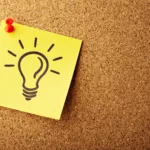The process of dividing content into separate pages or sections, usually for the purpose of making it easier to navigate and access. In web design, pagination is commonly used to break up large amounts of content, such as blog posts, search results, or product listings, into smaller, more manageable pages.
Typically, pagination involves displaying a series of numbered links or buttons that users can click to access different pages of content. For example, if a blog has 20 posts, it might be divided into 2 pages with 10 posts on each page. The user can then click on the page number links to navigate between the different pages of posts.
Pagination can have a number of benefits, including:
- Improved performance: By dividing content into smaller chunks, pagination can help to reduce the load time of a page, making it faster and more responsive.
- Better user experience: By making content easier to navigate and access, pagination can improve the user experience by reducing clutter and allowing users to find what they are looking for more quickly and easily.
- Increased engagement: By making it easier to browse through large amounts of content, pagination can encourage users to spend more time on a website and engage more deeply with its content.




